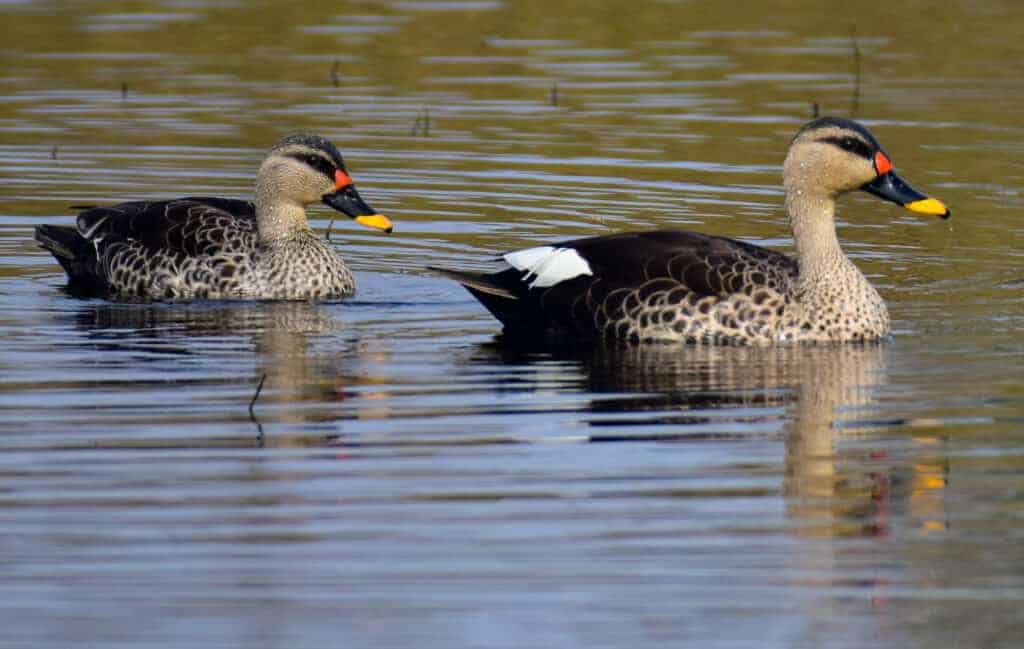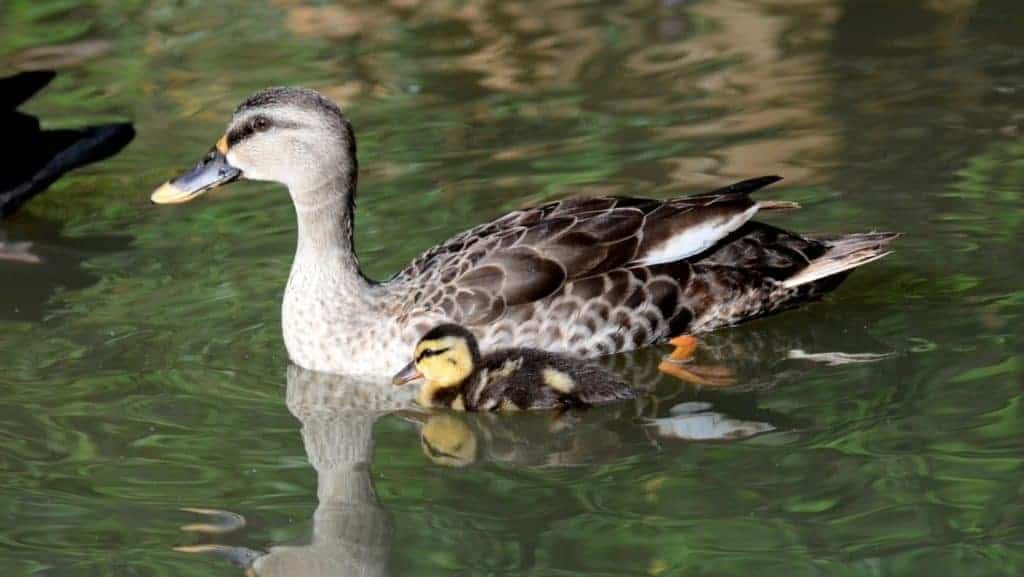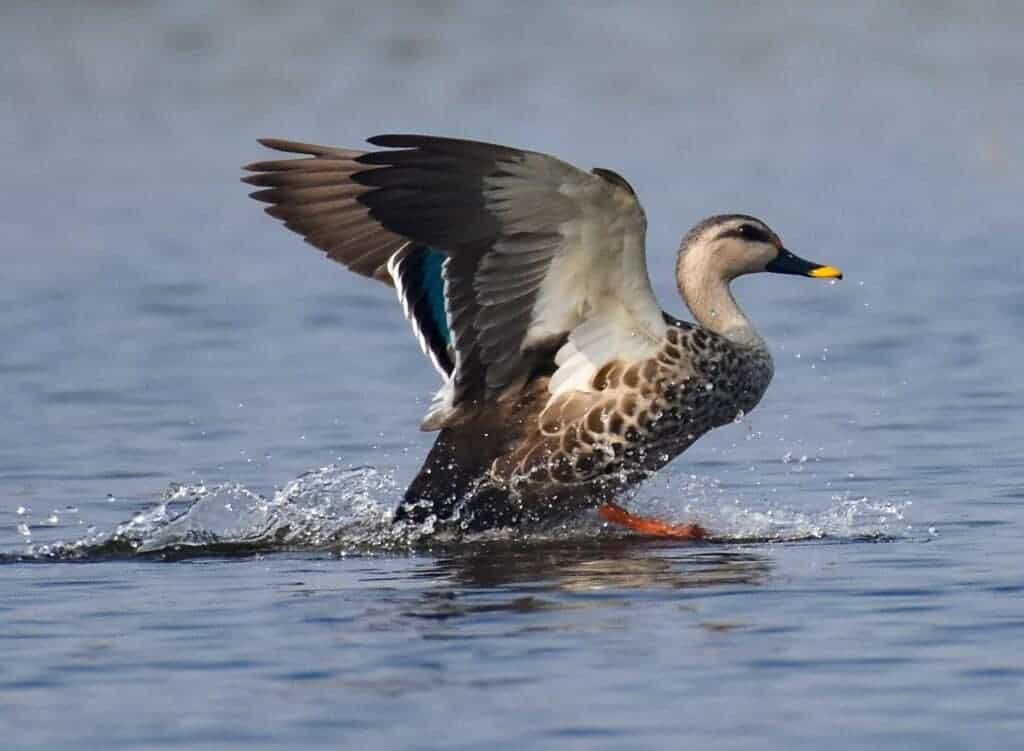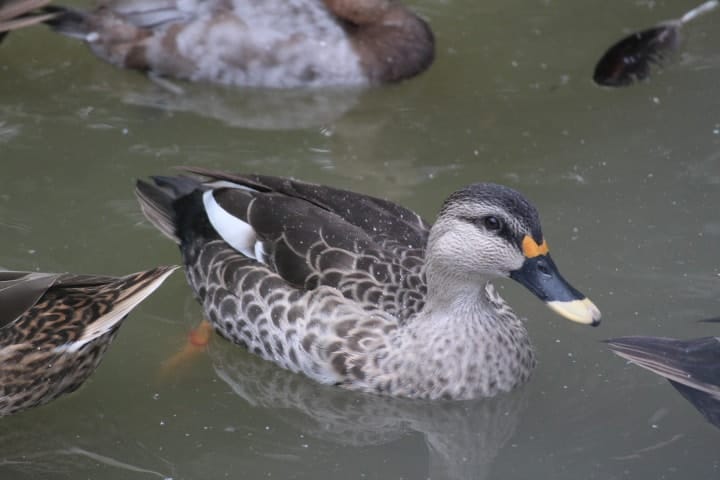Indian Spot-billed Duck

There are two subspecies recognised:
- A. p. poecilorhyncha — Indian Subcontinent, from the Indus Valley (Pakistan) east to Assam.
- A. p. haringtoni — from east Assam and Myanmar, east to China and Vietnam.


Anas poecilorhyncha
Spot-billed Ducks are mainly vegetarian dabbling ducks. Vocalisations include a loud quack made by females, and a deeper, quieter rab sound by males.
They like inland and coastal wetlands, preferring open, low ground, shallow freshwater lakes and marshes with plenty of emergent vegetation.

The main differences between these and Eastern Spot-billed Ducks, is that there are large white areas on the tertials of the male. These can be seen even when the wings are folded. The sides of the head are a purer buff, and there is usually a small area of orange/red at the base of the bills. This is a little larger and more distinct in the drake.
Subspecies A. p. haringtoni is slightly smaller than the nominate and has more uniform underparts. The red area at the base of the bill is smaller and may be absent.
This species lays 6–14 whitish eggs, which are incubated for ~26 days. Wild nesting females, young and eggs may be predated by water and marsh-dwelling snakes. In aviculture, they breed readily and care should be taken enclosing them with other ducks. They readily hybridise with several closely and not-so-closely related species, and these offspring are frequently fertile.
Share this page